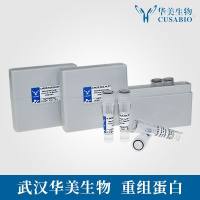Pollen Development in Anthers of Arabidopsis
互联网
|
Overview |
||||||||||||||||||||
| Using this procedure, it is possible to follow the development of pollen mother cells through to mature pollen. Sterile males were made using irradiation mutagenesis of Landsberg erecta seed. Buds harvested from the primary inflorescence just before bolting seem to give more consistent results (reasonable chromosome pictures) than buds that develop later. Buds are harvested and fixed from populations that are known to segregate sterile males. Plants are allowed to flower and bolt a second time. At this stage plants are scored for sterility or fertility. | ||||||||||||||||||||
| Procedure | ||||||||||||||||||||
|
1. Sow Arabidopsis seeds in Petri dishes on a layer of sterilized superfine grade Perlite pre-wetted with Gamborg's B5 Medium (see Growing Arabidopsis protocol). 2. Incubate in a growth chamber at 19-23°C under cool white fluorescent light (1500 to 2200 lux). 3. After 7 days, transplant the seedlings into compost and continue growing in the incubator. 4. The primary inflorescence should be harvested 18 to 20 days after sowing, using watchmaker's forceps. It is critical that buds be harvested before bolting begins. 5. Fix the inflorescence in Ethanol:Acetic Acid for 24 hours. 6. Transfer to 70% Ethanol for storage at 4°C until required. 7. Under a stereomicroscope and using a mini scalpel, dissect the inflorescence bud by bud. 8. Dissect individual buds in a drop of 45% Acetic Acid on a slide. Anthers showing even a hint of yellow coloration will contain fairly mature pollen; therefore, try to use smaller buds with whitish anthers. 9. Remove all material apart from the anthers. 10. Carefully remove excess Acetic Acid with a piece of filter paper and immediately add a drop of 1% Propionic Carmine to stain the chromosomes (see Hint #1). 11. Gently tap the preparation with a copper rod (or, failing that, use the flat end of a dissecting needle handle) to release cells from the anthers. 12. Place a cover slip on the preparation. 13. Pass the slide through a spirit-burner flame 2 to 3X and then apply gentle pressure to the cover slip to squash preps for viewing. 14. View and photograph the slides. Use a green filter for enhanced contrast and Ilford FP4 film. Within the buds obtained from an inflorescence you should see pre-meiotic pollen mother cells, meiosis, tetrads, microspores, and mature pollen. |
||||||||||||||||||||
| Solutions | ||||||||||||||||||||
|
||||||||||||||||||||
| BioReagents and Chemicals | ||||||||||||||||||||
|
Propionic Carmine Vermiculite Gravel Ethanol John Innes Potting Compost No. 3 Irish Moss Peat Silvaperl Perlite Acetic Acid |
||||||||||||||||||||
| Protocol Hints | ||||||||||||||||||||
|
1. Using warmed 1% Propionic Carmine can help soften tissue during the staining. |
||||||||||||||||||||
| Citation and/or Web Resources | ||||||||||||||||||||
|
1. Sharma, A.K. and Sharma, A. (1980). Chromosome Techniques: Theory and Practice, 3rd ed, 711 pp. Butterworths, London. 2. Gamborg OL, Miller RA, Ojima K. Nutrient Suspension cultures of soybean root cells. Exp. Cell. Res. 1968; 50 :151-158. |









